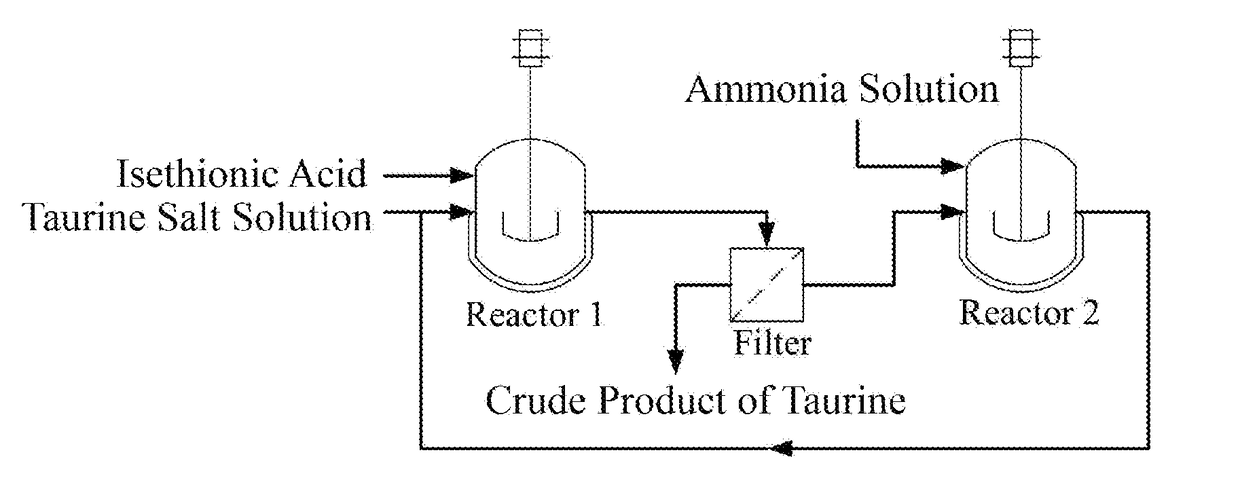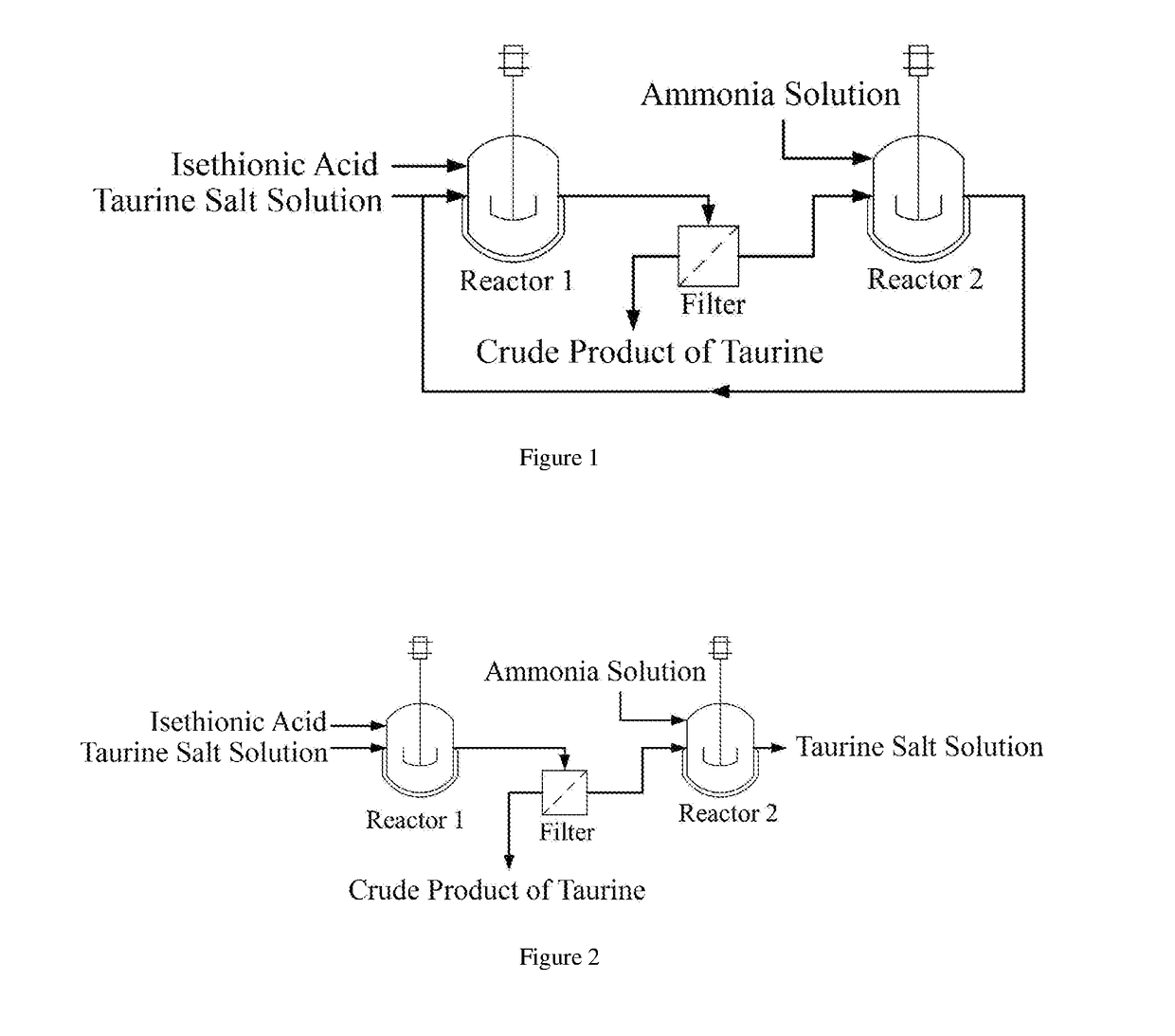A process for producing taurine
a technology of taurine and process, applied in the field of taurine preparation, can solve the problems of overproofing of sulphates in products, affecting and affecting the cost of raw materials and other problems, to achieve the effect of improving the utilization rate of raw materials, simplifying the production process, and reducing the use of dangerous chemical materials
- Summary
- Abstract
- Description
- Claims
- Application Information
AI Technical Summary
Benefits of technology
Problems solved by technology
Method used
Image
Examples
example 1
[0028]500 mL of aqueous sodium taurine solution with mass percent concentration of 46 wt % was added into a reaction bottle, and then isethionic acid was added slowly under stirring at room temperature until the pH reached to 5.5. The system was filtered to obtain 216 g of the crude product of taurine after the system temperature was dropped to 15° C. The filtrate was transferred into a reaction bottle, and then 1710 g of ammonia solution with mass percent concentration of 26.5% was mixed with the above filtrate. In autoclave, the reaction was carried out at 250° C. and 10 MPa pressure for 1 h. 697 g of sodium taurine solution was obtained after cooling, discharging and subsequently removing ammonia by evaporation. The content of taurine was determined by HPLC. The content of sodium isethionate was determined by Ion Chromatography. The results were shown in Table 1; wherein the percentages in the table all were mass percentage.
TABLE 1Each component content in the crudeContent of sod...
example 2
[0029]500 mL of sodium taurine solution obtained in Example 1 was added into a reaction bottle, and then isethionic acid was added slowly under stirring at room temperature until the pH reached to 7.5. The system was filtered to obtain 229 g of the crude product of taurine after the system temperature was dropped to 15° C. The filtrate was transferred into a reaction bottle, and then 1700 g of ammonia solution with mass percent concentration of 25.8% was mixed with the above filtrate. In autoclave, the reaction was carried out at 253° C. and 10.5 MPa pressure for 1 h. 615 g of sodium taurine solution was obtained after cooling, discharging and subsequently removing ammonia by evaporation. The content of taurine was determined by HPLC. The content of sodium isethionate was determined by Ion Chromatography. The results were shown in Table 2; wherein the percentages in the table all were mass percentage.
TABLE 2Each component content in the crudeContent of sodium taurine in theproduct o...
example 3
[0030]500 mL of sodium taurine solution with mass percent concentration of 46 wt % was added into a reaction bottle, and then isethionic acid was added slowly under stirring at room temperature until the pH reached to 8.5. The system was filtered to obtain 223 g of the crude product of taurine after the system temperature was dropped to 15° C. The filtrate was transferred into a reaction bottle, and then 1690 g of ammonia solution with mass percent concentration of 26.0% was mixed with the above filtrate. In autoclave, the reaction was carried out at 256° C. and 10 MPa pressure for 1 h. 580 g of sodium taurine solution was obtained after cooling, discharging and subsequently removing ammonia by evaporation. The content of taurine was determined by HPLC. The content of sodium isethionate was determined by Ion Chromatography. The results were shown in Table 3; wherein the percentages in the table all were mass percentage.
TABLE 3Each component content in the crudeContent of sodium taur...
PUM
| Property | Measurement | Unit |
|---|---|---|
| Temperature | aaaaa | aaaaa |
| Temperature | aaaaa | aaaaa |
| Temperature | aaaaa | aaaaa |
Abstract
Description
Claims
Application Information
 Login to View More
Login to View More - R&D
- Intellectual Property
- Life Sciences
- Materials
- Tech Scout
- Unparalleled Data Quality
- Higher Quality Content
- 60% Fewer Hallucinations
Browse by: Latest US Patents, China's latest patents, Technical Efficacy Thesaurus, Application Domain, Technology Topic, Popular Technical Reports.
© 2025 PatSnap. All rights reserved.Legal|Privacy policy|Modern Slavery Act Transparency Statement|Sitemap|About US| Contact US: help@patsnap.com


